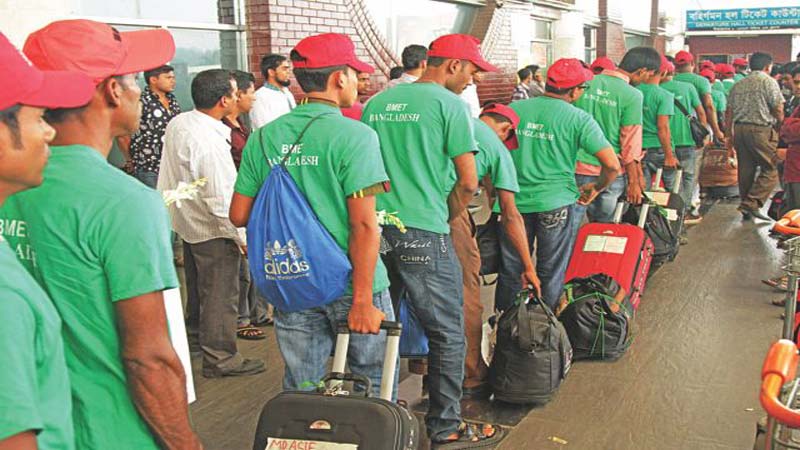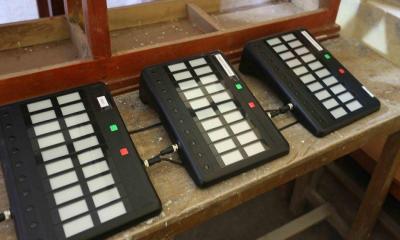-58 Pc of emigrants went abroad with loan money
-52.03 Pc paid money to brokers for migration expenses
Those who want to be a migrant worker have no sufficient money to go abroad with their own expenses. That is why almost all of them have to borrow or have to get a loan to fulfill their wish. In a study, it has been found that 58.24 percent of the country's total emigrants go abroad on loan. Among them, 60.07 percent of people from rural areas go abroad with loans and 51.83 percent from urban areas.
It can be seen from a gender point of view that men go abroad for loans more than women is 58.74 percent and in the case of women, it is 37.98 percent. In this case, among the immigrants of Barisal division, the rate of financing the expenses for immigration is the highest, 68.51 percent. On the other hand in Sylhet the minimum is 46.37 percent. These data have emerged in a survey conducted by Bangladesh Bureau of Statistics (BBS). Recently, this report was presented on the website of the bureau.
The survey showed that 58.24 percent nationally, 60.07 percent rural and 51.83 percent urban have taken loans to meet their migration expenses.
According to the BBS, international migration is generally the movement from one country to another for the purpose of living or working. After all, when people cross the border of their home country and stay in the destination country for a minimum period (6 months), it is called international migration.
Among the migrants, the highest number of migrants went as labor (employment) to Maldives 98.05 per cent, Malaysia 96.86 per cent, Libya 95.93 per cent, Greece 95.48 per cent, Qatar 95.22 per cent, Bahrain 94.95 percent and in Saudi Arabia 94.57 percent.
On the other hand, 32.58 percent went for education in UK, highest 53.36 percent immigrants in Canada.
Kuwait has the highest number of migrants as domestic workers, 72.38 percent. In addition, 55.22 percent in Oman and 50.67 percent went to Saudi Arabia.
A country-by-country review of data on the education level of the international migrant population by gender shows that 53.91 percent of the total migrant populations pass grades 5-9. Apart from this, 18.96 percent of SSC and equivalent, 10.75 percent of HSC and equivalent, 8.46 percent of 1st-4th class pass and 3.52 percent never went to an educational institution.
Training is very important in providing skilled manpower in the international labor market and creating overseas employment. Many migrants undertake on-the-job training before moving abroad to qualify themselves for the international labor market. Currently many government and private organizations are conducting such training courses.
Data on institutions receiving and providing training in pre-work related training among international migrants are presented by rural-urban and departmental basis. Analysis of the given data shows that 47.66 percent of the total migrants who received training before going abroad received training from private institutions. This rate is 45.73 percent and 53.65 percent in rural and urban areas respectively. Apart from this, 40.54 percent of the total migrants received training from government institutions, which is the second highest. This rate is 42.73 percent in rural areas and 33.70 percent in urban areas.
It was observed that among the total trained migrants, maximum 20.05 percent received training in construction related work before going abroad. Apart from this, 17.91 percent of immigrants received training in driving and motor mechanic, 11.15 percent in hotel and restaurant and 10.62 percent in foreign language.
22.02 percent of the migrants who received training and who went abroad and engaged in work related to the training.
Having received training in related work and working in the respective field. Apart from this, 18.21 percent in driving and motor mechanic field and 11.95 percent in hotel and restaurant field are working in the respective fields after receiving training.
10.04 percent of international migrants received work-related training before moving abroad. In department wise analysis, it is noteworthy that the rate is highest in Rangpur division 40.83 percent and lowest 5.40 percent in Sylhet division.
It can be seen that among the department-wise international migrants, maximum 79.90 percent in Barisal division and minimum 64.94 percent in Chittagong division have worked in training related matters before going abroad.
All expenses related to travel abroad for work, education, residence or any other purpose are considered as immigration expenses. The highest 34.63 percent of the immigrants traveling to Saudi Arabia spent Tk 4 to 5 lakh and the second highest 29.50 percent spent Tk 3 to 4 lakh.
In the case of immigrants going to Malaysia, the highest 42.30 percent and the highest 38.10 percent in the case of Bahrain, the immigration cost is Tk 3 to 4 lakh. On the other hand, in the case of Italy, the highest 53.12 percent and the highest 31.21 percent in the case of the United Kingdom, the cost of immigration has been more than Tk 5 lakh.
Analyzing the given data, it can be seen that 52.03 percent of the international migrants paid money to brokers for their migration expenses, which is 53.10 percent and 48.25 percent for rural and urban areas respectively. On the other hand, 42.09 percent of the country's immigrants paid the related expenses to private companies or agencies and 3.09 percent to government institutions. Department-wise review shows that the rate of payment of immigration expenses to brokers (immigration facilitators) is highest in almost all departments, but in case of Rangpur division, maximum 54.87 percent of immigration expenses of immigrants are paid to private institutions.
ZH






